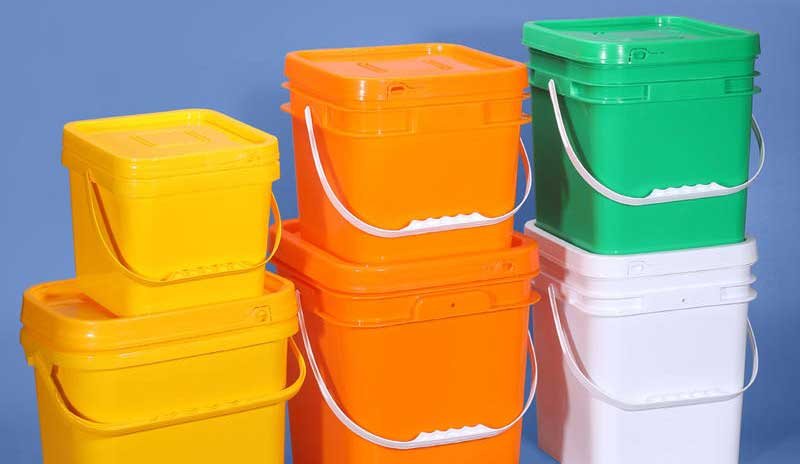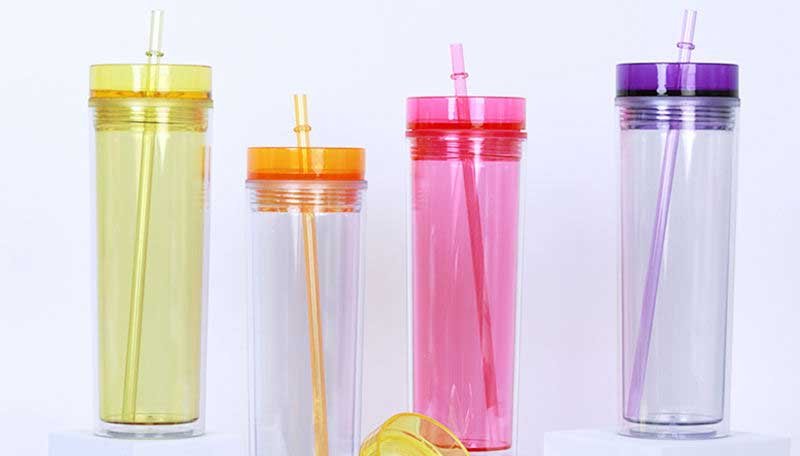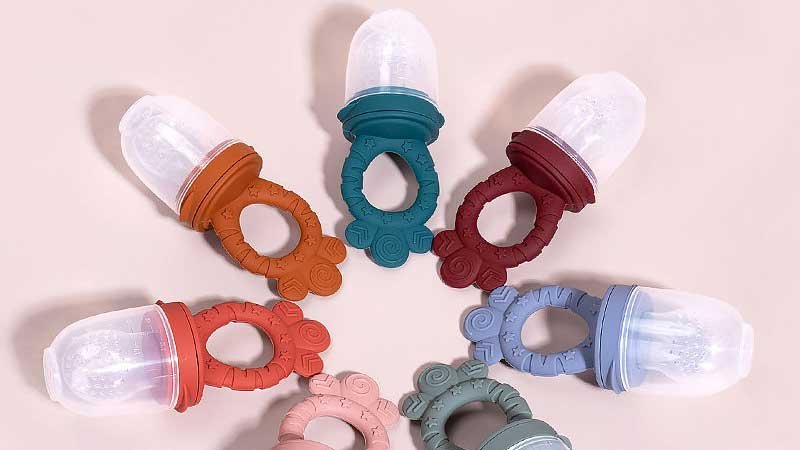Silicone and plastic are two important materials in modern manufacturing and everyday life, and they occupy an extremely wide range of applications. Whether it’s household goods, kitchen utensils, electronic seals and medical devices, these two materials can be found everywhere. Although they may be similar in appearance, they have very different compositions, properties and applications.
In this article, we will take you through the core differences between these two common materials in terms of their composition, production process, material properties, environmental characteristics, application areas and their respective strengths and weaknesses, to help you choose the most appropriate material solution for your product.
What is silicone and plastic?
Silicone
Silicone is a synthetic polymer elastomer, mainly synthesized by silicon dioxide through complex processes. It is a non-toxic, odorless, environmentally friendly material, with a unique three-dimensional mesh structure, giving it excellent flexibility and heat resistance.
Common processing techniques for silicone include:
- Compression Molding
- LSR Injection Molding
- Extrusion
These processes are relatively complex, but can give silicone products excellent performance and strong product consistency, especially for high standards of food-grade, medical grade and industrial sealing products.

Plastic
Plastics use petroleum by-products as the main raw material and undergo a polymerization reaction to produce various types of plastics, such as polyethylene (PE), polypropylene (PP), polyvinyl chloride (PVC), polycarbonate (PC), and so on. Because of their variety, plastics offer greater flexibility in price, performance and appearance design.
The molding process of plastics is mature and efficient, mainly including:
- Injection Molding
- Blow Molding
- Extrusion
- Rotational Molding
These processes are suitable for rapid mass production and are widely used for a variety of everyday and industrial products.

Material Performance Comparison
| Comparison | Silicone | Plastic |
| Temperature Resistance | -40°C to 230°C, up to 300°C for special types. High heat resistance. | 70°C to 120°C. Softens or deforms at high heat. |
| Flexibility & Resilience | Soft, flexible, and durable. Quick recovery after bending. | Hard, less flexible. Prone to cracking or deforming. |
| Chemical & Aging Resistance | Resistant to UV, ozone, and chemicals. Long lifespan. | Easily ages, yellows, and degrades. |
| Weight & Feel | Heavier, soft, and premium feel. | Lightweight, easy to carry. |
Temperature resistance
Silicone has a wide range of temperature resistance. Ordinary silicone products can be used for a long time in the environment of -40 °C to 230 °C, while special silicone can withstand high temperatures of up to 300 °C, especially suitable for kitchen supplies, medical equipment and high temperature sealing field.
The temperature resistance of plastics varies from material to material. Ordinary plastics such as PP and PE have a temperature resistance of between 70°C and 120°C. When exposed to high temperatures, they tend to soften, warp and even release harmful substances. Even for high-performance engineering plastics, it is difficult to reach the silicone’s temperature resistance.
Flexibility and resilience
Silicone has excellent flexibility and good resilience. It does not age or deform easily over long periods of time and recovers quickly even after prolonged stretching or bending. This makes it particularly suitable for applications such as maternal and baby products and medical products, which require a high degree of flexibility.

Plastic is generally hard and less flexible. It is prone to fatigue, brittle cracking or deformation over time, especially at low temperatures.
Chemical resistance and anti-aging properties
Silicone is resistant to acid and alkali, ultraviolet rays and ozone, and is not easy to age due to environmental factors, making it ideal for outdoor and special environments.
Most plastic materials are susceptible to aging, yellowing and even releasing harmful substances due to UV radiation, chemical erosion or high temperature.
Weight and density
The density of plastic is generally lower than that of silicone. Therefore, plastic products are lightweight and easy to carry and transport, so they have an advantage in the bulk consumer goods market.

Silicone is slightly heavier, but its feel is softer and more delicate, with a stronger sense of class, making it more suitable for the middle and high-end product market.
Safety and Environmental Protection Comparison
Safety
Silicone is a non-toxic and odorless material that meets international food safety standards such as FDA and LFGB. It is widely used in pacifiers, kitchenware, medical devices and other products that come into direct contact with the human body. It is extremely safe, and even at high temperatures, silicone will not release harmful substances.
Plastics need to be differentiated according to specific materials. Food-grade PP and PE can be safely used for tableware and food packaging, but when used in high-temperature heating, you need to pay extra attention to avoid the release of harmful substances. Other plastics such as PVC and PS may release toxic substances at high temperatures or after aging, posing certain safety risks.
Environmental protection
Silicone materials are combustible and produce only carbon dioxide and water after combustion, with no toxic gas emissions, making them environmentally friendly. Some special silicone also has degradable properties. However, the recycling system of silicone is still not perfect, and the recycling cost is high.
Plastic recycling technology is relatively mature, and PE and PP are especially notable for their high recycling rates. However, most plastic products are difficult to fully recycle and do not degrade easily due to complex additives, leading to pollution caused by their prolonged presence in the environment.
Applications
Typical Silicone Applications
Silicone is widely used in maternal and baby, kitchen, medical and outdoor fields due to its safety, high temperature resistance and good elasticity.
| Category | Examples | Key Features |
| Maternal and Baby Products | Pacifiers, teethers, bowls | Safe, non-toxic, soft touch |
| Kitchen Supplies | Cake molds, spatulas, preservation covers | High temperature resistance, easy to clean |
| Medical Equipment | Catheters, seals | Medical-grade safety standards |
| Electronic Accessories | Waterproof rings, dust plugs | Strong sealing, aging resistance |
| Outdoor Sports Equipment | Diving goggles, non-slip mats | Strong weather resistance |

Typical Plastic Applications
Plastic is widely used in home goods, home appliance shells, auto parts and consumer products due to its lightweight, easy processing and low cost advantages.
| Category | Examples | Key Features |
| Household Goods | Water cups, storage boxes, garbage cans | Lightweight, durable, low-cost |
| Home Appliance Shells | TV, air conditioner, refrigerator shells | Easy to process, various shapes |
| Automobile Parts | Light shells, bumpers | Cost-controlled |
| Toys & Consumer Goods | Building blocks, packaging boxes, plastic bags | Colorful, fast mass production |

Cost analysis and material selection
From a cost perspective, plastic products are far less expensive to produce than silicone, and are particularly suitable for low unit price products that require mass production. Plastics are quick to process and have low mold costs, making them suitable for short-cycle production and fast-selling markets.
Silicone’s cost is higher, but its excellent performance and environmental attributes make it more advantageous in the field with high requirements for safety, durability and comfort. Especially in Europe, America, Japan and other high-end markets that focus on environmental protection and safety, silicone products are highly favored.
How to choose between silicone and plastic?
| Material | Advantages | Disadvantages | Applications |
| Silicone | High and low temperature resistance, good softness and elasticity, safe and non-toxic, strong aging resistance | High cost, low color saturation, poor recyclability | Food-grade products, maternal and baby products, medical equipment, eectronic seals, outdoor equipment |
| Plastic | Low cost, high productivity, rich colors, flexible processing | Easy to age, poor temperature resistance, some materials are toxic, environmental pressure | Mass consumer products, home appliance shells, automobile parts, toys and packaging |
The best time to choose silicone:
- The product needs to contact with food or human body for a long time
- The product is used in environments that involve high or low temperatures or harsh outdoor environments.
- Target markets value environmental protection and product quality
The best time to choose plastic:
- Low cost and high volume production
- Product designs that require colorful and complex shapes
- Consumer goods and products that do not require high temperature resistance or flexibility.
Overall, silicone and plastic have their own advantages and are suitable for different products and application. When choosing a material, you can rationally select silicone or plastic according to the product use, target market demand and cost budget, in order to achieve the best balance of product performance and cost-effectiveness.